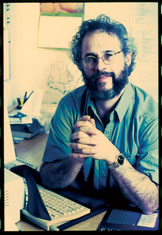|
|
Multiple Personality Disorder |
March 1999 |
Seeking a friendly interface in a multitasking world.
Hardware, software’Ķanywhere you look in our technology-driven industry you see feature-laden production tools. Manufacturers constantly add new features and improve the old ones, and just when you think they can’Äôt possibly find anything to add, they show you three cool new features that you never anticipated. In many cases, the additions don't even increase the price of the product.
Indeed, we now have tools that can do way more tricks than most of us will ever use. The burning question is, are the features usefully presented? Although some companies have recently put more emphasis on designing a friendly user interface, the problem of putting a friendly face on products that have myriad possibilities remains daunting. These issues arise with both hardware and software, but this month we're going to talk about software user interfaces.
In this issue's cover story about 2-track audio-editing programs ("Shaping Better Waveforms,’Äù p. 44), coauthors David Rubin and Dennis Miller note that in many cases, what distinguishes top-notch software applications from each other is not their feature sets but their user interfaces. "To a great extent," Rubin observes, "interface design is a matter of personal taste."
In his "Final Mix" column ("Under One Roof," p. 210), Larry the 0 takes this one step further. From his perspective, sometimes more is less in that a specific type of work often calls for only a limited feature set, and having every feature under the sun can be as much a hindrance as a help. Once again, the more features you put into a product, the harder it becomes to put a friendly face on it. In addition, huge, one-size-fits-all programs are more likely to be unstable than streamlined programs.
Larry's suggestion’Äîspecialized, task-specific versions of programs’Äîis interesting and different. I don't know whether it would be financially attractive to developers and dealers or practical for designers, but it's certainly worth discussing. I once hoped that a component-software architecture such as Apple's Open Doc would provide a solution. Sadly, Apple let the technology stagnate.
So here's another idea. Manufacturers could develop user-interface editors for their programs, with which knowledgeable users could hide unwanted features, rearrange menus, and generally alter the entire look and feel of the program, saving the results as a Preferences preset. This would go beyond the flexibility of Steinberg's ReBirth (a program simpler than a pro-level audio editor) or the screensets in Emagic's Logic Audio, or even Cakewalk's CAL.
User-interface presets could be saved to disk or uploaded to a Web site. Programs could ship with several presets customized for tasks such as music tracking, mixing, mastering, post-production, and game-sound design. As with ReBirth, an online community of interface developers could be fostered.
The code for the whole enchilada would be hidden under the hood. Yes, the program would still be large, but you wouldn't have to wade through features you don't need. Dealers could offer a single version of a program that could become many different tools. It's ambitious, but think of the possibilities. |
